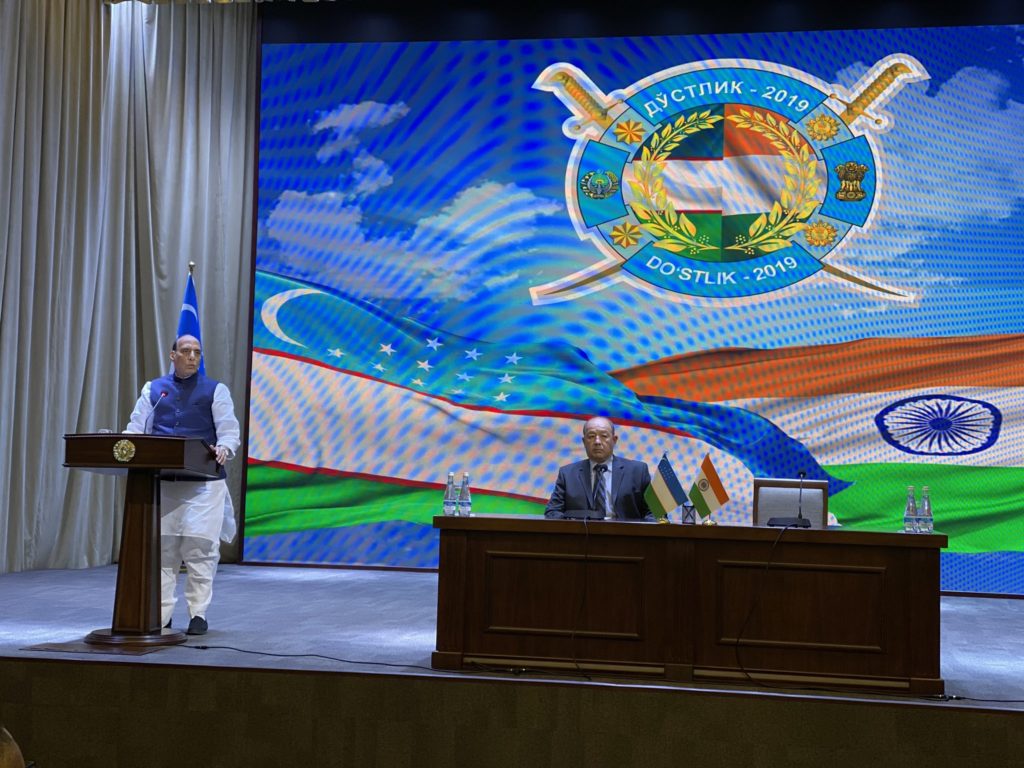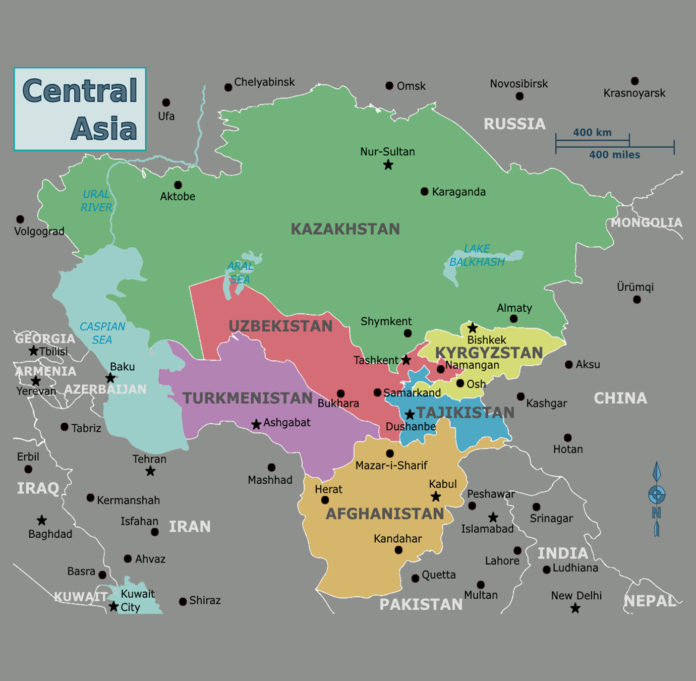The recently held Indian-Central Asian multilateral summit meeting has refreshed New Delhi’s desire for enhancing its influence beyond South Asia. The virtual meeting hosted by Prime Minister Modi was based on the formulation of a broader inter-regional framework for cooperative ties between India and the five Central Asian Republics (CARs). The vision of regional security and stability allowed the leaders diversify their cooperative interaction consisting of bilateral and multilateral collaboration. The virtual meeting for the extension of Indian influence beyond its home region has allowed Indian prime minister to discuss the Afghanistan issue with the international community. The five heads of Central Asian States actively participated in the virtual meeting and formally supported Modi’s approach for managing Afghanistan with the help of its neighboring Central Asian states. The representatives of the six states agreed on the formulation of a combined approach over Afghanistan after the US-withdrawal. The hasty withdrawal of the US has compelled the Modi government to reshape its Afghan policy through redefining New Delhi’s ties with the Central Asian nations. The meeting with leaders of Kazakhstan, Kyrgyzstan, Tajikistan, Turkmenistan and Uzbekistan discussed issues of emerging humanitarian crisis from Afghanistan. Parallel to emphasizing the Afghan humanitarian crisis, the issue of recognizing the newly established government of Taliban in Kabul also remained the main focusing area. The combination of humanitarian and political issues in Kabul has forced the Modi administration to formulate a joint working group for Afghanistan which is also linked to the debate on Chahbahar Port, which will let Indian and Central Asian states expand the vision of their trade in the world politics. The participating leaders agreed to ensure mutual connectivity which is essential to multiply the business and trading activities between India and the Central Asian region. The vision of regional connectivity between India and its Central Asian economic partners has already linked the six states to the International North-South Transport Corridor (INSTC) which has provided Indian and Central Asian counterparts a way to connect their commerce with the European nations, parallel to involving Iran, Afghanistan, and Russia in the inter-regional framework of the INSTC.
The vision for binding India in the cross-regional connectivity models of the Central Asian region has allowed New Delhi to adopt a multidimensional approach for the group of five neighboring states. Apart from the inter-governmental structure of the INSTC, India has been recognized as an active member of the Ashgabat Agreement, a multimodal transport agreement between Nur-Sultan, Tashkent, Ashgabat, Tehran, New Delhi, Islamabad, and Muscat. The formulation of an international transport and transit corridor is designed to create a trading link between the states of Persian Gulf, Central and South Asia. The objective of expanding their vision of multilateral cooperation has created various other intergovernmental initiatives such as the TAPI gas pipeline project between four neighboring states (Turkmenistan, Afghanistan, Pakistan, and India). In addition to having various cooperative energy plans at bilateral and multilateral levels, the Indian leaders have preferred to maintain multidimensional strategic ties with their Central Asian counterparts. The Indian Army has started conducting joint military exercises with Uzbekistan from 2019 with the objective of keeping the interaction between armed forces on annual basis. The annual military exercises (DUSTLIK) between the regular military forces of both states have allowed the strategic communities of New Delhi and Tashkent to share their common vision on various global issues. The bilateral military arrangement between the regular armed forces of both states focuses on the formulation of their shared vision related to counter-terror tactics. In addition to DUSTLIK, India-Kyrgyz Joint Special Forces Exercises (KHANJAR) has facilitated New Delhi in including Bishkek in broader Indian geo-strategic calculations. With Kazakhstan, the Indian security establishment has decided to increase its military-to-military ties under joint military exercise (KAZIND) which emphasized the extension of Indian strategic engagement with the group of five states in the domains of counter-insurgency and counter-terrorism. Furthermore, the quest for diversifying New Delhi’s strategic interaction with the Central Asian states has led New Delhi towards developing its air bases in Tajikistan i.e. Farkhor and Gissar which are intended to empower New Delhi, creating a strong position in the Central Asian region. The Indian policymakers are convinced on the strategic potential of five landlocked countries of Central Asia, that is why Indian leaders are determined in exploring the strategic potential of energy-rich states of Central Asia. The mutually collaborative designs of these countries have increased their intra-regional interconnectedness through various roads, railways, highways, and oil and gas pipelines. These infrastructural developments in the region have become the fundamental point of attraction for India, and Indian leaders have decided to adopt an inter-regional approach for connecting South Asia to the energy-rich region of five former Soviet republics.
The policy of keeping the group of energy-rich five states close to New Delhi has been formally recognized as Indian Connect Central Asia Policy (CCAP). The CCAP appeared as an indispensable feature of Indian foreign relations in 2012 with the aim of expanding Indian sphere of influence beyond its home region. The cooperative designs of CCAP emphasize the formulation of security, political, cultural and strategic relations with the states beyond the territorial adjoining neighbors. The conceptual framework of CCAP cannot be separated from the conventional Indian strategic thoughts which are shaping New Delhi’s role in world politics. By emphasizing the exploration of bilateral and multilateral collaboration with different states beyond the neighboring nations, the Indian foreign policy decision-makers have kept the CCAP active and dynamic. Analogous to few other leaders, Prime Minister Modi is strong-minded in keeping his realpolitik thinking closely integrated to the Central Asian region. Modi’s formal visit to the five Central Asian republics in 2015 revolutionized the CCAP, and also kept New Delhi politically aligned with states rich in natural resources. In other words, Modi’s version of CCAP attempted to actively place India in the evolving Great Game over the Central Asian region.

With the help of a dynamic Central Asian approach, Indian officials provided a glimpse of their intended complaisant connections with the group of five former Soviet republics in 2012. Thus, the creation of a strong political communication through regular visits of high-officials and the formulation of different multidimensional strategic and security cooperation through active military-to-military talks proved to be the central pillars of New Delhi’s objective for taking forward its collaborative relations with the group of five states. Apart from political and strategic collaborations, the mainstream framework of the CCAP is heavily dependent on the societal association of India to Central Asian cultural. For this purpose, New Delhi is continuously designing different cultural initiatives. The people-to-people contacts between New Delhi and its Central Asian partners has resulted in a multileveled education and societal collaboration in different fields. Even the first summit meeting held in January 2022 focused on the expansion of societal interaction between the sides, in which New Delhi agreed on inviting the youth population of Central Asian nations to India on annual basis. In addition to providing education funding to the students of Central Asian states, the Indian government mentioned its plans for arranging special diplomatic courses to the five CARs. For deepening cultural ties, the Modi government categorically highlighted its desires for maintaining various joint literary platforms. The Indian leaders agreed to commission an Indian-Central Asia Dictionary of common words, whereas the Central Asian countries showed their willingness for holding several Buddhist exhibitions.
Presently, the unexpected growth of Indian foreign relations with the energy-rich states of Central Asian region is primarily due to Modi government’s decision for cultivating politically coordinated and diplomatically supportive interaction beyond its neighbors. The combination of both types of interactions has resulted in economically collaborative and strategically harmonizing relations between India and Central Asia. Modi’s Central Asia enthusiasm is fundamentally inherited in its quest for rationalizing the extended neighborhood policy of New Delhi, in which its major focus is on states located in different regions. Modi’s preference for arranging bilateral and multilateral high-official meetings with its Central Asian partners has let New Delhi move the CCAP from its inactive traditional domains. The enhancement of Central Asian engagement has further led Indian leaders to overcome the underwhelming features of their cooperative interactions with the group of five republics. Thus, the ongoing patterns of reciprocity are clearly communicating to the international community the symbolically growing of cooperative bilateralism between New Delhi and its Central Asian allies. The political symbolism between them has led them to participate actively in the National Day celebrations of each other and by doing this, the political leaders of these nations are creating various avenues for summit-level meetings.
The prevalence of cooperative bilateralism between the governments of these states, including India, is heavily dependent on the role of New Delhi in world politics. The focus of New Delhi on Central Asia is intended to facilitate New Delhi’s creation of Central Asia as an important region for securing its global geo-strategic interests. The aim of including Central Asian region in the broader geo-strategic calculations of India is formally associated to the basic framework of CCAP, and Indian military, diplomatic and political authorities are heavily engaged in implementing New Delhi’s Central Asian approach. The cultivation of multilayered engagements with the governments of five nations is purely a matter of Indian bilateralism with other states, but the impact of this multilateral interaction cannot be separated from South Asian neighbors of Afghanistan and Pakistan. In other words, the extension of cooperative ties between India and Central Asian states has signaled to the international community the persistent interests of New Delhi in keeping Kabul in its favor. Without considering the role of Pakistan in restoring peace in Afghanistan, Indian desires for remaining active in the Afghanistan led Modi government to exclusively emphasize upon the Central Asian countries. Therefore, the CCAP convinced the Modi administration to foster its multidimensional partnerships with Central Asian states while ignoring the role of Pakistan in managing Afghanistan.




